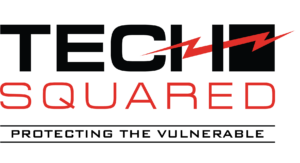Did you know that spam accounts for more than half of all global email traffic? From absurd promises of great riches to malicious attachments, spam continues to be one of the biggest security threats and productivity killers facing modern businesses. Spam hurts businesses in a multitude of ways, and it costs the global economy $130 billion annually in wasted energy and lost productivity.
Spam is one of the biggest cyberattack vectors
Spam is one of the most effective attack vectors of all. A quick glance in almost any spam folder will reveal not only unsolicited advertising emails, but likely plenty of malicious emails as well. Many spam emails contain links to malicious websites designed to capture confidential information or malicious attachments.
Although false positives do occur on occasion, you don’t have to worry much about the spam that automatically lands in your spam folder. It’s the malicious emails that make it through to the inbox that tend to be the most dangerous. Emails allow would-be cybercriminals to perform targeted phishing scams, which often appear to come from a legitimate company or individual.
A staggering 92% of all malicious software is delivered through email. Although spam filters should catch the majority of it, it only takes one in a thousand to get through to cause serious damage to your organization. That’s why employees should be trained to never click and download suspicious links or attachments, particularly if they come from an unknown sender. In addition, you’ll need enterprise-grade spam filtering and email protection to automatically scan incoming emails for suspicious links and attachments.
Spam kills productivity and consumes bandwidth
Dealing with spam also drains productivity to the extent that it can cost thousands of dollars per year per employee. When you have employees spending several hours per week working with email, a considerable portion of that time may be spent assessing each email for relevance before flagging unwanted or potentially malicious ones as spam. False positives are also a problem, in which legitimate emails can get overlooked or, worse still, accidentally deleted.
Manually dealing with spam is a serious time sink, and it also leaves things open to human error — which is at the root of most data breaches. If employees aren’t adequately trained in dealing with spam, they’ll take longer to assess emails. It’s not just staff productivity that suffers either. If you’re running your own in-house email server, you’ll be wasting storage space, processing power, and bandwidth on spam. To increase efficiency, many businesses now have their emails hosted in a cloud server complete with advanced filtering mechanisms.
How to stop spam
Unfortunately, it’s impossible to avoid spam entirely, but you can bring it down to a level that it no longer makes a significant impact on your business. As a business, your email addresses typically need to be readily available, which also makes them easy for spammers to scrape. This greatly increases the volume of spam, but it’s also unavoidable.
That’s why companies should always use a business-grade email service with their own domain. Not only do these services provide better security and spam-protection, but they’re also much more professional. Finally, using a third-party spam-filtering service that features cutting-edge functionality like AI can add an extra layer of protection to your business communications.
Tech Squared provides IT services and solutions that reduce stress and add value to your business. Call us today to find out how.


